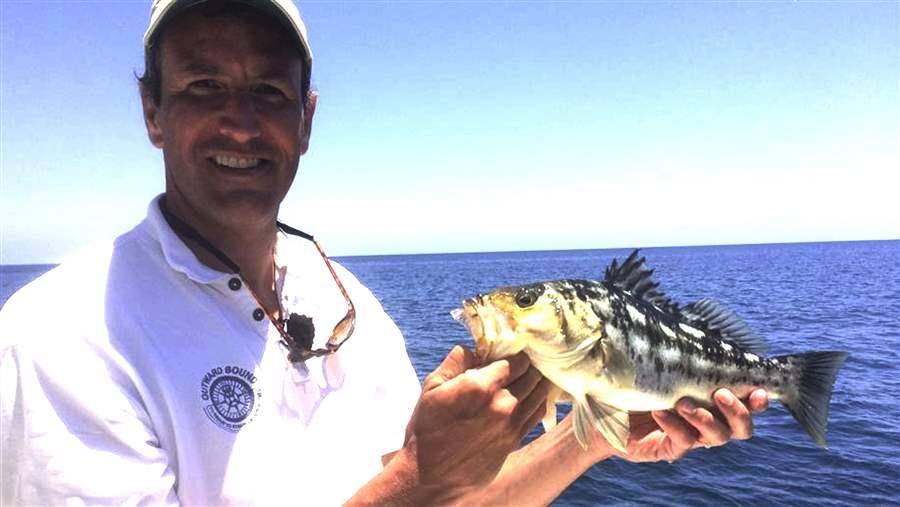Fishing for Answers Along the Southern California Coast
Smooth blue waters, a clear sky overhead, and plenty of fish in the boat: Not a bad way to spend a day, experiencing the remarkable marine environment along the coast of Southern California and learning first-hand about the importance of little fish that feed the ecosystem and sustain coastal economies.
Pew policy expert Steve Marx joined Paul Hoofe, a conservation-minded fisherman who holds several International Game Fish Association world records and practices an ethic of catch-and-release fishing; Phil Friedman, a California outdoor radio host; and Pew’s California field representative Sean Watson for a day filming the syndicated sport fishing program Angler West TV. The anglers spent the day with Bill Gorham, who operates the charter boat Tailchaser out of Newport Beach, California.
Hoofe and Gorham both work with the International Game Fish Association, a nonprofit organization committed to responsible and ethical angling practices through science, education, rule-making, and record-keeping. Marx and Angler West TV's producer Justin Wolff joined them for a day on the water to discuss the importance of conserving bait fish for fishermen along the West Coast.
Wolff captured footage of the fishermen catching plenty of calico bass, also known as kelp bass, on the east side of Catalina Island, one of several species that congregate by the rocky shore and among the kelp beds along the California coastline. Like other Pacific game fish, kelp bass depend on a diet of anchovies, surf perch, and other small forage fish that form large schools known to fishermen as “bait balls.”
Since 2011, Marx has been encouraging the Pacific Fishery Management Council to improve conservation of forage fish. He’s also an avid recreational fisherman who has fished commercially in his home state of Alaska.
Marx has been struck by a scarcity of bait fish both in the water and among the retailers who sell live bait to anglers. Sardines have become notoriously hard to come by in light of their well-documented decline, and it was tough to find anchovies big enough to put on a hook. If fishermen can’t find the bait, he noted, it’s likely other fish and wildlife that live in the California Current ecosystem can’t either—including predatory game fish like California yellowtail that feed on forage fish.
“It was really hard to find bait in the morning,” Marx observed. “Paul said he couldn’t remember a time in his life when both anchovy and sardine were so scarce at the same time.”
While anchovies and sardines may be small in appearance, these little fish are a big deal to the health of our ocean and the West Coast’s economy. Not only do they form an important part of the marine food web but the sport fishing industry generates $2.5 billion in sales of saltwater fishing and equipment throughout the region. This economic value is just one more reason to work to maintain healthy forage fish populations.
Paul Shively manages ocean conservation efforts for The Pew Charitable Trusts along the West Coast.
Angler West is a 30-minute weekly sport fishing show that reaches over 12 million households on the West Coast. Check here for a broadcast schedule of upcoming episodes.


This video is hosted by YouTube. In order to view it, you must consent to the use of “Marketing Cookies” by updating your preferences in the Cookie Settings link below. View on YouTube
This video is hosted by YouTube. In order to view it, you must consent to the use of “Marketing Cookies” by updating your preferences in the Cookie Settings link below. View on YouTube






